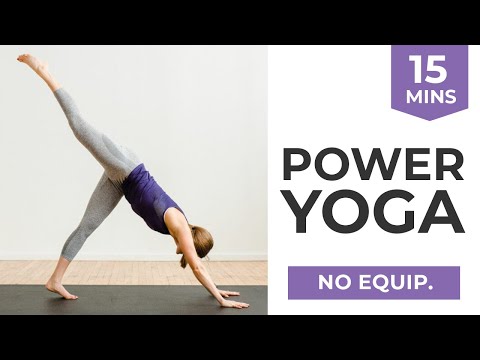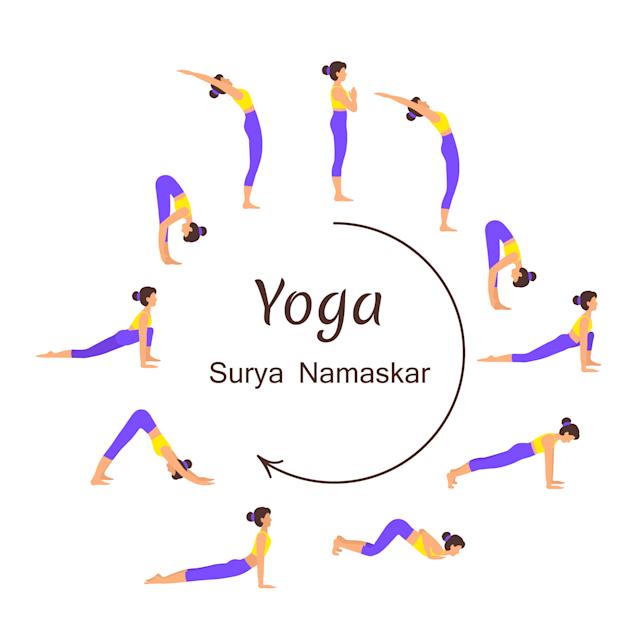
Yoga is an excellent exercise that involves combining breath with movement, which reduces blood sugar levels. Yoga helps relax the body and improve blood flow, which can in turn help improve diabetes symptoms. Yoga is especially beneficial for diabetics as it can improve blood pressure control and pancreatic function. It has been shown to be beneficial for those with high blood sugar levels. This is why it is so highly recommended for patients with diabetes.
It can be practiced at home and is generally considered safe. It is important to see a doctor before you start a yoga practice. Avoid high-impact yoga and fast-paced activities if you have diabetes. Avoid head stands and forward bends as these pose can increase blood pressure. These exercises should not be performed if you have diabetes.
Yoga also helps diabetics manage their stress. Certain asanas may increase the ability of the pancreas to produce insulin. By improving pancreatic function, yoga also improves glucose levels and the patient's ability to resist obesity. It is important to consult a physician before you start any yoga exercises. To help you select the right program, a doctor may be able to discuss the benefits and offer guidance.

Among the many other benefits of yoga for diabetics, one of the most beneficial poses is the ardha matsyendrasana, which massages the internal organs. Because it stimulates insulin production, it can also reduce the risk of developing heart disease. This can help lower your risk of developing diabetes. It also improves overall health. You should monitor your blood sugar level and take prescribed medication while you practice.
Yoga for diabetics has many additional benefits. It increases blood circulation and improves the function of the endocrine glands. It can be used to help diabetes patients manage stress. Type 1 diabetes can be managed by managing stress. Because of this, insulin production is reduced when the body feels stressed. But stress can also make it more difficult for the body to produce insulin.
In addition to its positive effects on the body, yoga also helps reduce the risk of diabetes. By stretching the internal muscles, yoga improves efficiency, which results in an increase in insulin secretion. This is crucial for controlling blood sugar. Additionally, it can help control the stress level in diabetics and those with prediabetes. Although the practice of yoga is not suitable for everyone, it has been shown to be beneficial for people with diabetes.
Although yoga practice can help improve blood glucose levels there are certain limitations. Yoga clinical trials are often lacking proper control groups, a small number of participants and a short duration. These studies might not reflect all the benefits of yoga. These studies may not be representative of all benefits. Most important is the fact the exercise helps patients manage stress which lowers their risk of developing diabetes.

Yoga has many benefits. It isn't an aerobic exercise but it does improve blood sugar and reduce waist size, which is very important for people who have diabetes. It can help with constipation and improve your heart health. It can also promote a healthier mood and lower blood pressure. Yoga is an excellent form of medicine for diabetics. It will provide them with the energy they require to live a healthy lifestyle.
Another benefit of yoga is its ability to help with diabetes. It can prevent diabetes-related nerve damage, such as neuropathy. People with diabetes may also benefit from it's ability to regulate blood sugar levels. It can even improve the quality life for people with diabetes. Exercise should be under the watchful eye of a certified professional.
FAQ
Do I have to do it every day?
No! At least 30 minutes moderate-intensity exercise five days per week is a good goal. It means you need to exercise hard enough or walk fast enough that you are slightly out-of- breath.
What is the best workout order?
It all depends on your goals. If you want to build muscle mass, then do heavy weights first. Next, you can move onto cardio. For those who want to lose weight or exercise, you can switch from cardio to strength-training.
Cardio is a great way to lose fat if you are just looking for a quick workout. Next, add strength training.
You should do cardio last if your goal is to increase muscle mass. This stimulates growthhormones, which helps build muscle mass.
It is important to eat before going to work out. This will fuel your muscles, making them work harder. It makes you feel better when you exercise.
Are there any benefits to practicing yoga?
Yoga has existed since ancient times. It has only recently been more popular. Yoga is very popular with celebrities as well as ordinary people who wish to be fit and healthy.
Yoga is great for strengthening and stretching your muscles. It can help you relax and calm down.
The main difference between yoga and other forms of exercise is that yoga focuses on breathing techniques.
You can practice various poses to improve your flexibility and balance.
Can I drink alcohol while exercising?
Yes. Alcohol has increased energy expenditure, speed up recovery time, and reduced soreness.
The insulin sensitivity of alcohol is also increased, which makes it easier for glucose to be absorbed.
Alcohol can cause dehydration. This can slow down your metabolism. It also reduces testosterone production, which may decrease muscle-building potential.
For these reasons, women shouldn't drink alcoholic beverages before working out. Women who drink heavily should wait at least 24 hours between drinking and working out.
Nursing mothers should abstain from alcohol as much as they can.
Men should drink only one glass of alcohol per day.
How can I lose weight by avoiding certain foods?
Avoid trans fats. Trans fats increase LDL (the harmful) cholesterol and lower HDL (the good).
Trans fats are commonly found in fast food, deep-fried and packaged baked goods as well snack cakes and other processed foods.
These unhealthy fats also contribute to inflammation, leading ultimately to heart disease or diabetes.
Avoid eating foods that contain artificial sweeteners. Artificial sweeteners have been linked to an increase in cancer risk.
These chemicals are found everywhere, from soft drinks to chewing candy to candy bars to chewing gum. These chemicals are also found in meat, poultry, eggs, and other foods.
Artificial sweeteners are saccharin (cyclamate), sorbitol and aspartame.
The American Heart Association recommends that these chemicals be avoided as they can damage DNA.
What is butter good for?
Butter is a great source of saturated fats. This type of fat helps to build stronger bones, healthy skin, and hair.
Vitamin K is also found in butter, which helps prevent bleeding from cuts or bruises. Vitamin K is combined with vitamin C to prevent bruises.
Butter is rich in minerals such as calcium, potassium, and phosphorous. These minerals promote stronger bones, teeth, and teeth.
Butter is not without its flaws. Butter has high cholesterol. There are studies that show excess cholesterol may increase the likelihood of developing cardiovascular diseases.
Butter is also high-fat, which can contribute to obesity and increase cholesterol.
Butter can be spread on bread, but you don't have to dip it into soups or salads if you absolutely must. Bread absorbs less oil than pasta and potatoes.
What is a good seven-day workout routine?
A seven-day program should include three days of cardio training (running, biking and swimming), two strength exercise (using free weights or weight machines) and one flexibility/core work out (yoga, Pilates). It is important to complete each activity at least once weekly. The total time for each session should not exceed 45 minutes.
Cardiovascular Exercises: Swimming, Cycling, Running
Aim to do at least 60 minutes per week of cardio. To achieve the best results, aim to exercise for at least 75 minutes each week. Cardio exercise can improve blood flow and stimulate muscle development.
Strength Training
Cardio exercises target the heart, lungs and muscles. Strength training targets the muscles, tendons and bones. Strength training builds lean muscle mass, which helps burn calories even when resting.
Flexibility and Core Workouts
You can strengthen your entire body by strengthening flexibility and core exercises. Both yoga as well as Pilates are great choices.
Statistics
- Are You One of the 20% of Guys (mh.co.za)
- Get free shipping and 25% off today. (healthline.com)
- 10 pounds in a month is likely during a lean bulking phase, especially for beginners. (muscleandstrength.com)
- Cardmembers earn 5% Back at Amazon.com with a Prime Credit Card. (amazon.com)
- By John Thompson Take a whopping 38% off a set of PowerBlock Pros. (menshealth.com)
External Links
How To
How does a man become fit in just 30 days?
Breaking down your fitness goals into smaller, more manageable steps is the best way for you to reach your fitness goals.
It is important to work towards your goal every day. This could include anything from 10 pushups that last 5 minutes to running 3km.
This will ensure that you see positive results if you practice it consistently over time.
Be consistent is key. Keep at it until success!
What is the main difference between Aerobic Fitness or Anaerobic Fitness
Anaerobic fitness is the ability to do intense physical work without oxygen. Anaerobic pathways are used when there is intense exercise to provide sufficient energy. Anaerobic pathways include glycolysis, creatine phosphate, the phosphagen, lactic acid, etc.
Aerobic fitness, on the other hand, is a sustained low-intensity exercise. While performing aerobic exercises, oxygen is used as the primary source of fuel for the cells. The aerobic pathway is more efficient than the anaerobic.
To run a marathon you need to first increase your aerobic capacity. You won't be successful if you focus only on your anaerobic ability.
Aerobic fitness is also referred to as cardiovascular fitness. Step tests and VO2 max testing are the most popular methods to measure cardiovascular fitness.
VO2 Max Test
VO2 max is the maximal amount of oxygen (O2) that the body uses during exercise. This test determines how much O2 your body can use during exercise.
This is the best test to assess cardiovascular fitness. The test is difficult to administer because it requires expensive equipment.
Step Tests
Step tests can be used to assess cardiovascular fitness. They are easy and effective. These are based on your weight and age, they require you to run or walk on a track.
These tests cost little, are quick and simple to do, and can be carried out almost anywhere. You can for instance walk on a treadmill 2 minutes, then stop for 1 minute. Your heart rate should remain within a specific range throughout the whole session.
This method is known as the "Bruce Protocol". Bruce himself was a runner who developed this protocol after he realized that his heart rate would not increase when he ran longer distances.